
A drink or beverage is a liquid intended for human consumption. In addition to their basic function of satisfying thirst, drinks play important roles in human culture. Common types of drinks include plain drinking water, milk, juice, smoothies and soft drinks. Traditionally warm beverages include coffee, tea, and hot chocolate. Caffeinated drinks that contain the stimulant caffeine have a long history.

A pub is a drinking establishment licensed to serve alcoholic drinks for consumption on the premises. The term first appeared in the late 17th century, to differentiate private houses from those open to the public as alehouses, taverns and inns. Today, there is no strict definition, but CAMRA states a pub has four characteristics:
- is open to the public without membership or residency
- serves draught beer or cider without requiring food be consumed
- has at least one indoor area not laid out for meals
- allows drinks to be bought at a bar
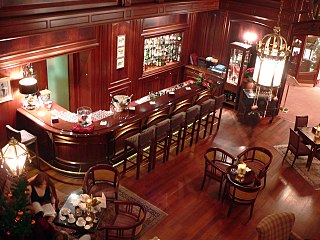
A bar, also known as a saloon, a tavern or tippling house, or sometimes as a pub or club, is an establishment retail business that serves alcoholic beverages, such as beer, wine, liquor, cocktails, and other beverages such as mineral water and soft drinks. Bars often also sell snack foods, such as crisps or peanuts, for consumption on their premises. Some types of bars, such as pubs, may also serve food from a restaurant menu. The term "bar" refers to the countertop where drinks are prepared and served, and by extension to the overall premises.
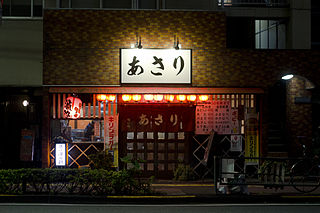
An izakaya is a type of informal Japanese bar that serves alcoholic drinks and snacks. Izakaya are casual places for after-work drinking, similar to a pub, a Spanish tapas bar, or an American saloon or tavern.

A beer garden is an outdoor area in which beer and food are served, typically at shared tables shaded by trees.
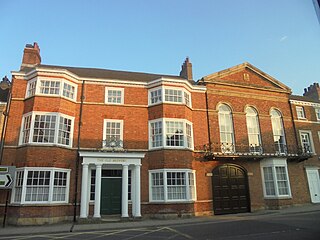
Samuel Smith Old Brewery, popularly known as Samuel Smith's or Sam Smith's, is an independent brewery and pub owner based in Tadcaster, North Yorkshire, England. It is Yorkshire's oldest brewery, founded in 1758, and one of three breweries in the town. Samuel Smith's, which is an unlimited family-owned company, produces a range including bitters, stouts, porters, lagers, and fruit beers, and is known as a highly traditional and somewhat eccentric operator of around 200 pubs due to its continued use of dray horses, bans on music and mobile devices, and, in the past, low beer prices.
Norwegian cuisine in its traditional form is based largely on the raw materials readily available in Norway and its mountains, wilderness, and coast. It differs in many respects from continental cuisine through the stronger focus on game and fish. Many of the traditional dishes are the result of using conserved materials, necessary because of the long winters.
Restaurants fall into several industry classifications, based upon menu style, preparation methods and pricing, as well as the means by which the food is served to the customer. This article mainly describes the situation in the US, while categorisation differs widely around the world.

A drinking establishment is a business whose primary function is the serving of alcoholic beverages for consumption on the premises. Some establishments may also serve food, or have entertainment, but their main purpose is to serve alcoholic beverages. There are different types of drinking establishment ranging from seedy bars or nightclubs, sometimes termed "dive bars", to 5,000 seat beer halls and elegant places of entertainment for the elite. A public house, informally known as a "pub", is an establishment licensed to serve alcoholic drinks for consumption on the premises in countries and regions of British influence. Although the terms are increasingly used to refer to the same thing, there is a difference between pubs, bars, inns, taverns and lounges where alcohol is served commercially. A tavern or pot-house is, loosely, a place of business where people gather to drink alcoholic beverages and, more than likely, also be served food, though not licensed to put up guests. The word derives from the Latin taberna and the Greek ταβέρνα/taverna.
Pete Brown is an English writer who has written extensively on the subject of beer and drinking cultures around the world. He has written twelve books; Man Walks Into a Pub, Three Sheets to the Wind, Hops and Glory, Shakespeare's Local, World's Best Cider, The Pub, Miracle Brew, The Apple Orchard, Pie Fidelity, Craft: An Argument,Beer By Design: The Art of Good Beer Branding, and Clubland: How the Working Men's Club Shaped Britain. Brown, who was born in Barnsley, West Riding of Yorkshire, lives in London.

Lutz Tavern is a bar in the Woodstock neighborhood of Portland, Oregon, in the United States. It was established by the Lutz family in 1947, who maintained ownership until the business was purchased by the Barisich family in 1954. Working-class locals and Reed College students frequent the bar, which is known for popularizing the beer Pabst Blue Ribbon. Lutz closed in 2010 after being run by the Barisich family for 56 years, then re-opened under new ownership and management in 2011.

Horse Brass Pub is a British-style pub in Portland, Oregon, in the United States. Established in 1976, the bar and restaurant serves British cuisine and has approximately 50 beers on tap.

The Roxy was a diner serving American cuisine in Portland, Oregon. Located on downtown Portland's Southwest Harvey Milk Street, the restaurant was established in 1994. The Roxy was popular as a late-night food destination and had a diverse clientele. Prior to the COVID-19 pandemic, the diner operated 24 hours a day, except on Mondays. The Roxy has been described as "iconic" and a "landmark", and was known for being an LGBT-friendly establishment because of its employees' community involvement and its location within the historic hub of LGBT culture and nightlife. Following a forced six-month closure due to the pandemic, the diner opened under new public health and safety guidelines in November 2020. The diner closed in March 2022.

Low Brow Lounge is a dive bar and restaurant in Portland, Oregon's Pearl District, in the United States.
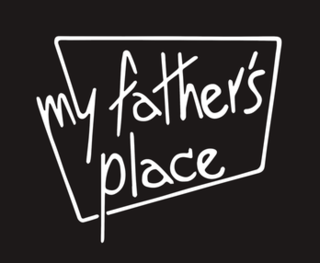
My Father's Place is a restaurant and dive bar in the Buckman neighborhood of Portland, Oregon. Housed in the New Logus Block, a building complex completed in 1872, included on the National Register of Historic Places, the diner has a game room and lounge and attracts a diverse clientele. The restaurant opened in 1978, and was later owned by Merrie Ann Dillon, who sold the business to her daughter Linda Moles in 2002. Remaining under the ownership of the Moles family, My Father's Place serves breakfast all day and offers happy hour options. The game room and lounge have pool tables, lottery machines, pinball, and a jukebox. Musicians Elliott Smith and Willy Vlautin frequented the bar, which hosts game nights and other events. Known as a local favorite, it operates every day including holidays, Thanksgiving and Christmas. The reportedly haunted My Father's Place has received a generally positive reception.

Shanghai Tunnel Bar, or simply Shanghai Tunnel, is a dive bar and Asian restaurant in the Old Town Chinatown neighborhood of Portland, Oregon. Named after the city's Shanghai tunnels, the underground bar serves Asian-themed cocktails and foods such as BLTs, Chinese chicken salad, miso and noodle soup, quesadillas, and veggie burgers. Owned by Phil Ragaway, Shanghai Tunnel is known for its inexpensive drinks and pinball machines. The bar closed temporarily during the COVID-19 pandemic, and later offered street-level service.
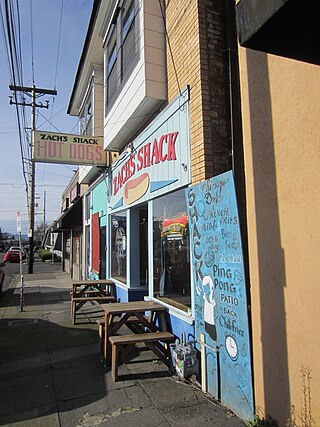
Zach's Shack is a dive bar and hot dog restaurant in Portland, Oregon.

Joe's Bar and Grill is a dive bar in Seattle's Chinatown–International District, in the U.S. state of Washington.
















